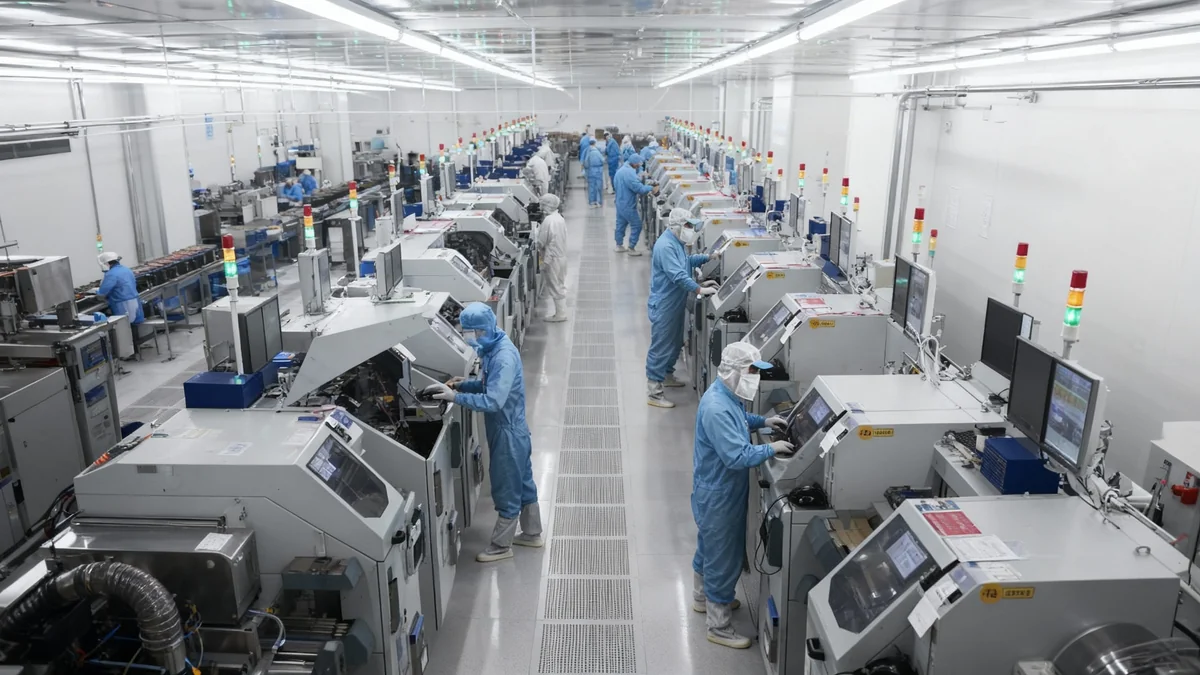The development of advanced artificial intelligence is increasingly dependent on massive data centers, often called “AI supercomputers,” that consume enormous amounts of electricity and capital. A recent analysis reveals that while the performance of these systems doubles every nine months, their cost and power requirements are doubling annually, creating a barrier that only a handful of the world's wealthiest corporations can overcome.
This rapid escalation in resource demand is concentrating the power to build and train next-generation AI models within a few private companies. This trend challenges the idea of a democratized AI ecosystem and raises significant questions about competition, national security, and environmental sustainability.
Key Takeaways
- The cost and power needed for cutting-edge AI systems are doubling every year, far outpacing performance gains.
- This dynamic creates an "exponential moat," concentrating advanced AI development within a few large corporations.
- Governments worldwide are now racing to build sovereign compute capabilities to avoid falling behind.
- Training a single frontier AI model can consume as much electricity as a small city uses in a year, with significant water and carbon footprints.
- Experts are calling for greater transparency and public oversight of the physical infrastructure that powers AI.
Understanding AI's New Power Source
Modern artificial intelligence relies on vast computing clusters to train its most powerful models. These systems, while often labeled “AI supercomputers,” are fundamentally different from the traditional supercomputers used in scientific research for tasks like climate modeling or nuclear physics simulations.
Instead of being designed for precise scientific equations, AI clusters are composed of thousands of interconnected Graphics Processing Units (GPUs) or custom accelerators like Google's TPUs. Their primary function is to perform the massive number of matrix multiplications required for deep learning, effectively processing trillions of data points to predict patterns, such as the next word in a sentence.
Hardware is the New Bottleneck
The core of AI development has shifted from clever algorithms alone to the sheer scale of the hardware that runs them. Access to cutting-edge chips like Nvidia's H100s and the high-speed networks that connect them has become the primary determinant of who can build frontier AI models. This hardware is the physical foundation upon which the future of AI is being built.
The scale of these operations is immense. Data centers dedicated to AI training can consume more electricity than nearby towns, requiring extensive cooling systems to manage the heat generated by densely packed servers. The nickname “supercomputer” persists because their energy demands and construction costs now rival, and often exceed, the world’s most powerful scientific machines.
An Exponential Divide in AI Capability
The economics of building these AI clusters are creating a significant gap between the technology's leaders and everyone else. A recent study analyzing 500 global AI compute systems identified a troubling trend: while performance doubles roughly every nine months, the associated cost and power consumption double every 12 months.
This imbalance creates what analysts call an “exponential moat.” With each technological leap, the cost of reaching the next frontier grows faster than the performance it delivers, pushing it further out of reach for all but a few dominant players. The result is a stark concentration of power.
Who is Being Left Behind?
The escalating cost of AI compute means that many institutions are no longer competitive at the cutting edge of AI research. This includes:
- Universities and academic research labs
- Small and medium-sized startups
- Many national governments
If a researcher or entrepreneur has an idea that requires training a new, large-scale model from scratch, it is often not feasible without access to the infrastructure owned by a major tech corporation. This effectively privatizes the cutting edge of machine intelligence, allowing a small number of firms to dictate the direction of AI development.
"Once compute becomes the bottleneck, the invisible hand of the market does not produce diversity. It produces monopoly."
This centralization contradicts the common narrative of AI democratization, where tools are supposedly available to everyone. In reality, the power to shape AI's future is shifting decisively to the owners of these massive compute farms.
The Geopolitical Race for Compute Sovereignty
Governments are beginning to recognize the strategic importance of controlling AI infrastructure. The concentration of compute power in the hands of a few private companies, primarily based in the United States, is seen as a national security risk by other nations.
In response, a global race to establish “AI sovereignty” has begun. At the 2025 Paris AI Action Summit, several nations pledged billions to upgrade their national AI capabilities. The United Kingdom, France, and Germany are actively working to expand their domestic compute capacity to support their own researchers and industries.
Meanwhile, the United States has launched initiatives to bolster domestic chip production, while China is investing heavily in renewable energy projects, like massive wind and solar farms, to ensure a supply of cheap electricity for its own AI ambitions.
A New Power Dynamic
An ironic twist in this race for national control is that corporations may emerge as the ultimate winners. The speed at which compute is concentrating in the private sector suggests a future where a handful of companies could wield more influence over the trajectory of technology and knowledge than many nation-states.
For regions like Europe, which has focused more on regulation than infrastructure investment, the challenge is significant. Without competitive access to energy and compute hardware, the concept of AI sovereignty may remain more rhetoric than reality.
The Physical and Environmental Toll
The race for AI supremacy carries a heavy physical cost. The energy and water required to train and operate frontier AI models are staggering, raising serious environmental concerns.
Training a single large AI model can require an amount of electricity equivalent to what a small city consumes in a year. The cooling towers needed to prevent these data centers from overheating demand enormous volumes of water. Siting these facilities in water-scarce regions places a significant strain on local resources.
The carbon footprint of AI is also highly variable. According to energy experts, a model trained on a grid powered by coal or natural gas can produce orders of magnitude more emissions than one trained using renewable energy sources like solar, wind, or hydropower.
Efficiency is Not a Silver Bullet
While each new generation of chips and AI architectures becomes more energy-efficient, these gains are consistently outpaced by the escalating ambition of AI developers. The overall demand for compute power continues to rise much faster than efficiency improvements can offset it.
In some cases, increased efficiency may even worsen the problem. By lowering the cost per experiment, it encourages researchers to run more and larger experiments, driving aggregate energy consumption even higher. This creates a relentless cycle of more compute, more power, and more cost, further reinforcing centralization.
A Call for Public Accountability
To prevent a future where AI's development is dictated by a few corporate boardrooms, experts argue that AI compute must be treated as a matter of public concern. This involves shifting the conversation beyond model safety and dataset fairness to include the physical machines that make AI possible.
Several key demands are emerging from technology policy analysts:
- Transparency: Public disclosure of who owns and operates the largest AI clusters.
- Auditability: The ability to verify what types of models are being trained and for what purposes.
- Shared Infrastructure: Publicly funded or consortium-based compute facilities that give researchers and smaller companies access to essential resources.
- Energy Accountability: Mandatory reporting from operators on not just total energy consumption but also its sources, carbon emissions, and water usage in real time.
The next major control point in artificial intelligence is not software but hardware. Without deliberate intervention and public oversight, the world risks creating an AI ecosystem where innovation is stifled, accountability is optional, and the true costs—financial, environmental, and societal—remain hidden.





